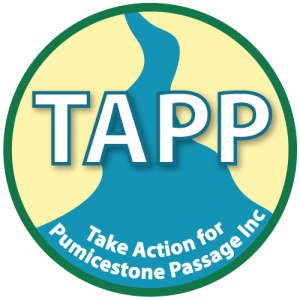Convergence workshop notes
Traditional Knowledge – First Nations people involvement
Susie Chapman
Knowledge gaps and actions needed
- Knowledge, language, values, culture:
- Need to enable capacity- building, knowledge sharing and participation within Traditional Owner groups, which requires behavioural change of researchers, practitioners etc.
- Education to public about implications of Native Title Registration for Kabi Kabi
- ‘Walking the landscape’ to include indigenous values and knowledge
- Continuation of education (formal) syllabus of Aboriginal history, culture, language, values, practices
- Oyster rock formation – can we use these?
- Dual naming: use Aboriginal names where they exist and support the creation of new naming to keep language alive
- Need access to public and private lands to maintain cultural values
- Acknowledging indigenous engineering and incorporating practices in engineering courses
- Need to develop mutual respect between all agencies, Councils and First Nations people to work together
- Respect Traditional timeframes – ‘Murri time’
- Funding/potential enterprise
- Need to address the lack of funding to engage with First Nations people properly for true value.
- Need more funding to support First Nations people to work on practical project on Country, and training to pass knowledge on to others.
- Use native species more – ‘Paddock to Plate’ with native bushfoods – more suited to climate, less pest pressure.
- Development of agricultural enterprises
- Need to develop knowledge of traditional trading, perhaps leading to economic opportunities now
- Planning:
- What would an indigenous integrated ecosystem service framework look like, and how would you get it into planning? ,
- Need to ensure that Cultural Heritage Management Plans are developed and undertaken at the outset of planning for development not tacked on at the end.
- Could we incorporate traditional knowledge of bioindicators into our recreation to make it more sustainable?
- Ensure indigenous values and knowledge are included in all planning schemes and documents – need triggers in place.
- Where are they today??
- Management:
- Two way approach to management
- Supporting their risk reduction practices eg cultural burning
- Need to overcome barriers of WHS, Certificates etc for cultural burning eg involve QFRIS, QFES etc.
- Engagement:
- How to engage? Time frames, processes if indigenous decision-making etc. Traditionally the whole of the community makes the decisions.
- NEED AN INDIGENOUS RANGER PROGRAM HERE
Geographical issues
Area 1:
- Need to plan and manage intense marine recreational use eg jetskis and kites – speed, density, accessibility – should be a focus
- Cultural landscape mapping and protection
Area 2:
Similar concerns and pressures to Area 1
- Need for waterways management plan – speed, density, accessibility
- Need to question placement of the Green Zones as to the depth of water.
- Reduce shorebirds impact – more roosting sites need protection
- ecosystem functioning eg shellfish habitat
- cultural heritage values mapped and protected
Area 3 & 4
- 4WD on sand beaches must be restricted, particularly in turtle nesting season
- Protection of natural assets (protection post forestry)
- Protect turtle hatchery
- Cultural landscape mapping and protection needs to be fed into Council and QPWS strategies
- Rehabilitation to improve and restore ecological and cultural values
Area 5
- What happens after the 100 year HQ Plantations forestry lease
- Unsealed road surface drainage and stabilization – some control of 4WDs needed
- Litter problem needs to be addressed
- Keep interurban break
- Education campaign about value of environment – whole Passage.
Areas 6a and 6b
- Manage water demand
- Green infrastructure provides cooling effect
- Flora and fauna management – domestic and animal control
- Habitat linkage – separation of suburbs
Areas 7a and 7b
- Control development in low-lying areas
- Control development in horticultural areas
- Saltmarsh/mangrove mapping, protection and enhancement
(climate change impacts understood)
- Protect agricultural areas and ecosystem function for agriculture and associated jobs
Top 5
- Complete understanding of ecological values and function/processes across catchment and Passage
- Acceptable recreation plan – best practice guidelines for recreation
- Better understanding of (people) carrying capacity
- Maintain and improve inter-urban break
- Improved marine ecology – includes good transport plan, better water quality
+ 6. more funding and co-operation
